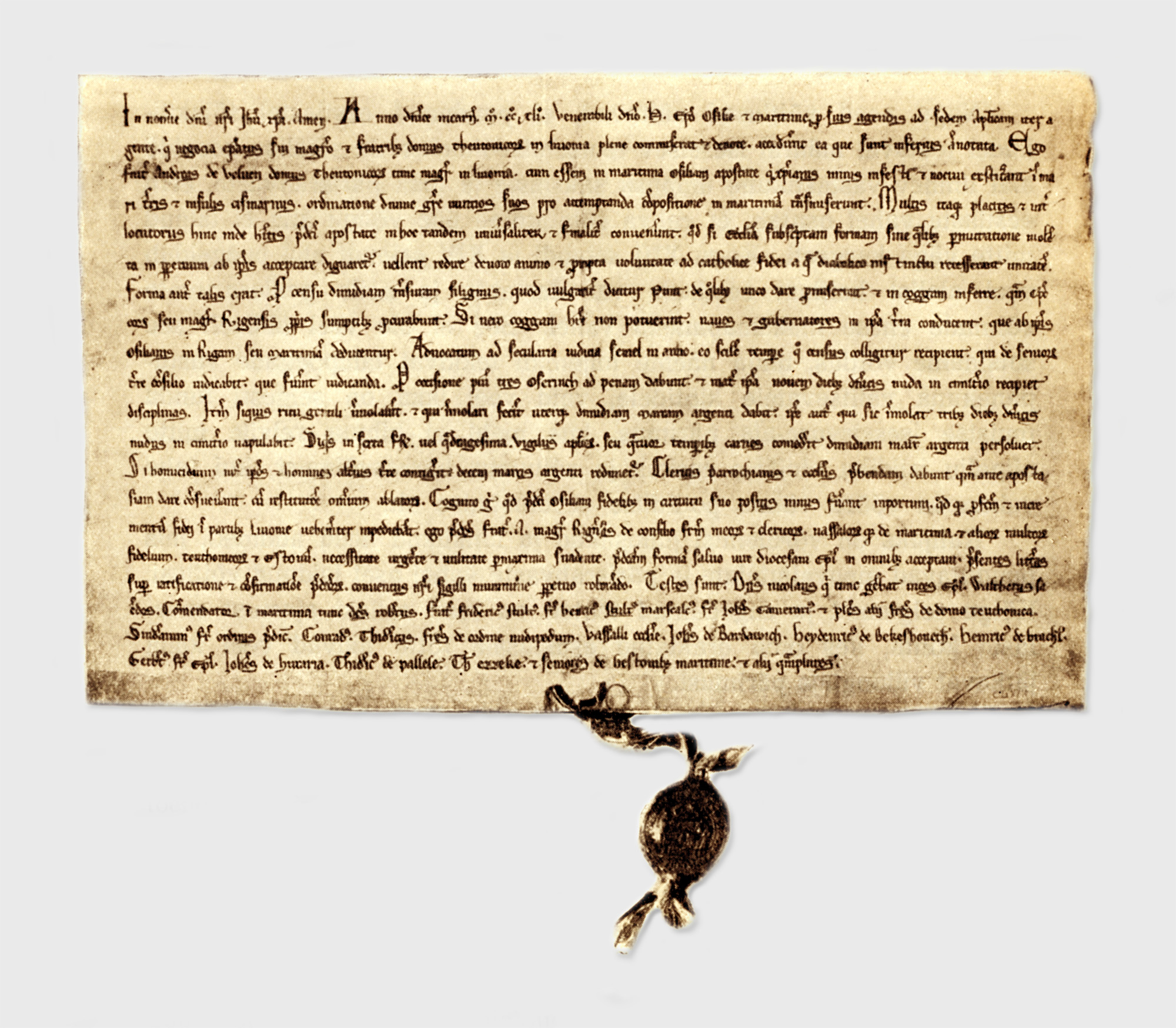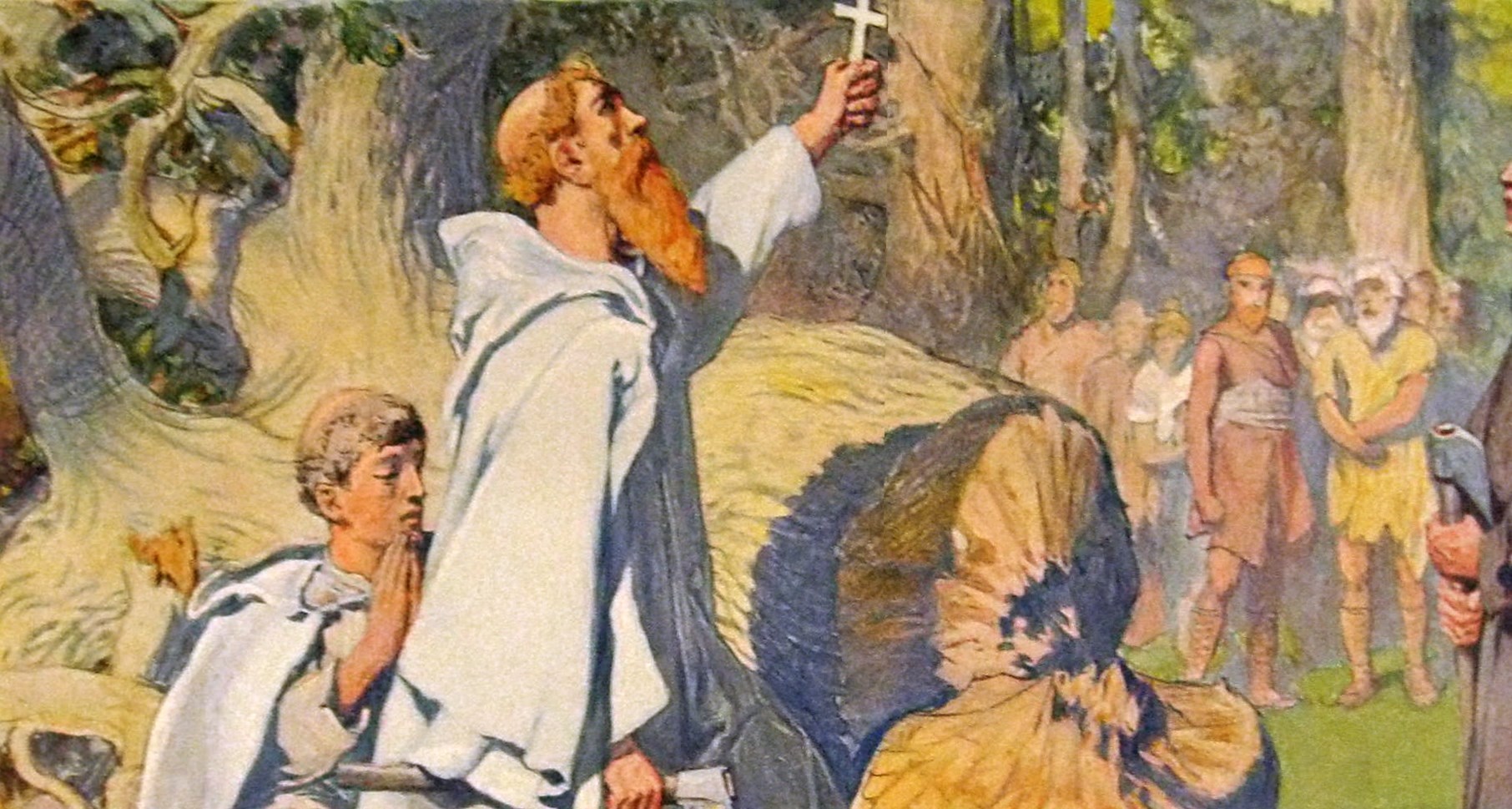|
Oeselians
Oeselians or Osilians is a historical name for the people who prior to the Northern Crusades in the 13th century lived in the Estonian island of Saaremaa ( Ösel) – the Baltic Sea island was also referred as ''Oeselia'' or ''Osilia'' in written records dating from around that time. In Viking Age literature, the inhabitants were often included under the name "Vikings from Estonia", as written by Saxo Grammaticus in the late 12th century. The earliest known use of the word in the ( Latinised) form of "Oeselians" in writing was by Henry of Livonia in the 13th century. The inhabitants of Saaremaa (Ösel) are also mentioned in a number of historic written sources dating from the Estonian Viking Age. On the eve of Northern Crusades, the people then residing in Saaremaa were described in the '' Livonian Rhymed Chronicle'': "The ''Oeselians'', neighbors to the ''Kurs'' ( Curonians), are surrounded by the sea and never fear strong armies as their strength is in their ships. In summe ... [...More Info...] [...Related Items...] OR: [Wikipedia] [Google] [Baidu] |
Northern Crusades
The Northern Crusades or Baltic Crusades were Christianization campaigns undertaken by Catholic Church, Catholic Christian Military order (society), military orders and kingdoms, primarily against the paganism, pagan Balts, Baltic, Baltic Finns, Finnic and West Slavs, West Slavic peoples around the southern and eastern shores of the Baltic Sea. The most notable campaigns were the Livonian Crusade, Livonian and Prussian Crusade, Prussian crusades. Some of these wars were called crusades during the Middle Ages, however others, including the 12th century First Swedish Crusade and several following military incursions by Scandinavian Christians against the then pagan Finnish people, Finns, were dubbed "crusades" only in the 19th century by romantic nationalism, romantic nationalist historians. However, crusades against Estonians and against "other pagans in those parts" were authorized by Pope Alexander III in the crusade bull, crusade Papal bull, bull ''Non parum animus noster'', in ... [...More Info...] [...Related Items...] OR: [Wikipedia] [Google] [Baidu] |
Tharapita
Taara (variations of the name include Tooru, Tharapita and Tarapitha), also known as Uku or Jumal, is a prominent god in Estonian mythology, with a strong resemblance to the Finnish Ukko and the Germanic Thor. Etymology The Livonian place name '' Thoreyda'' (also ''Thoreida'' and German ''Treiden'') attested in the Chronicle of Livonia is interpreted as the 'garden of Taara – Thor' from ''Taara'' + ''*aida'' 'garden'. If this interpretation is correct, the theonym ''Taara'' was also known in Livonian. The name ''Tharapita'' has been interpreted as 'Taara, help!' () and 'Taara's thunderbolt' (). History The Chronicle of Henry of Livonia mentions Tharapita as the superior god of the Oeselians (inhabitants of Saaremaa), also well known to Vironian tribes in northern Estonia. According to the chronicle, when the crusaders invaded Vironia in 1220, there was a beautiful wooded hill in Vironia, where locals believe Tharapita was born and from which he flew to Saaremaa. The h ... [...More Info...] [...Related Items...] OR: [Wikipedia] [Google] [Baidu] |
Saaremaa
Saaremaa (; ) is the largest and most populous island in Estonia. Measuring , its population is 31,435 (as of January 2020). The main island of the West Estonian archipelago (Moonsund archipelago), it is located in the Baltic Sea, south of Hiiumaa island and northwest of the Gulf of Riga. The administrative centre of the island, and of the Saare ''maakond'' (county), is the town of Kuressaare. From the 13th century until the first half of the 20th century, the island of Saaremaa was known in most of the world by variants of its other historical name Ösel. Etymology Saaremaa was called ''Eysýsla'' in the Icelandic sagas and other early medieval Scandinavian sources (Old Norse: , meaning "the island district"), and named in contrast with ''Aðalsýsla'' ("the great district") or the Estonian mainland. The island is called in modern Estonian and in Finnish — literally "land of the isle" or "land of the island",Toomse, Liine. "10 Estonian Islands You Should Visit." http ... [...More Info...] [...Related Items...] OR: [Wikipedia] [Google] [Baidu] |
Curonians
:''The Kursenieki are also sometimes known as Curonians.'' The Curonians or Kurs (; ) were a medieval Balts, Baltic tribe living on the shores of the Baltic Sea in the 5th–16th centuries, in what are now western parts of Latvia and Lithuania. They eventually merged with other Baltic tribes contributing to the ethnogenesis of present-day Latvians and Lithuanians. Curonians gave their name to the region of Courland (''Kurzeme''), Kuršėnai town, Curonian spit and many other localities. They spoke the Curonian language. Origin The ethnic origin of the Curonians has been disputed in the past. Some researchers place the Curonians in the eastern Baltic group.Östen Dahl (ed.) 2001, ''The Circum-Baltic Languages: Typology and Contact,'' vol. 1 Others hold that the Curonians were related to Old Prussians who belonged in the western Baltic group. History The historical Curonians were described in contemporary sources as warriors, sailors and pirates. They are on the record havin ... [...More Info...] [...Related Items...] OR: [Wikipedia] [Google] [Baidu] |
Ancient Estonia
Ancient Estonia refers to a period covering History of Estonia from the middle of the 8th millennium BC until the conquest and subjugation of the local Finnic tribes in the first quarter of the 13th century during the Teutonic and Danish Northern Crusades. The Mesolithic Period The region has been populated since the end of the last glacial era, about 10,000 BC. The earliest traces of human settlement in Estonia are connected with Kunda culture. The oldest known settlement in Estonia is the Pulli settlement, which was located on the banks of the river Pärnu, near the town of Sindi, in southwestern Estonia. It has been dated to the beginning of the 9th millennium BC. The Kunda Culture received its name from the ''Lammasmäe'' settlement site in northern Estonia, which dates from earlier than 8500. Bone and stone artifacts similar to those found at Kunda have been discovered elsewhere in Estonia, as well as in Latvia, Russia, northern Lithuania and southern Finland. Among ... [...More Info...] [...Related Items...] OR: [Wikipedia] [Google] [Baidu] |
Scandinavia
Scandinavia is a subregion#Europe, subregion of northern Europe, with strong historical, cultural, and linguistic ties between its constituent peoples. ''Scandinavia'' most commonly refers to Denmark, Norway, and Sweden. It can sometimes also refer to the Scandinavian Peninsula (which excludes Denmark but includes a part of northern Finland). In English usage, Scandinavia is sometimes used as a synonym for Nordic countries. Iceland and the Faroe Islands are sometimes included in Scandinavia for their Ethnolinguistics, ethnolinguistic relations with Sweden, Norway and Denmark. While Finland differs from other Nordic countries in this respect, some authors call it Scandinavian due to its economic and cultural similarities. The geography of the region is varied, from the Norwegian fjords in the west and Scandinavian mountains covering parts of Norway and Sweden, to the low and flat areas of Denmark in the south, as well as archipelagos and lakes in the east. Most of the population ... [...More Info...] [...Related Items...] OR: [Wikipedia] [Google] [Baidu] |
Thor
Thor (from ) is a prominent list of thunder gods, god in Germanic paganism. In Norse mythology, he is a hammer-wielding æsir, god associated with lightning, thunder, storms, sacred trees and groves in Germanic paganism and mythology, sacred groves and trees, Physical strength, strength, the protection of humankind, hallowing, and fertility. Besides Old Norse , the deity occurs in Old English as , in Old Frisian as ', in Old Saxon as ', and in Old High German as , all ultimately stemming from the Proto-Germanic theonym , meaning 'Thunder'. Thor is a prominently mentioned god throughout the recorded history of the Germanic peoples, from the Roman Empire, Roman occupation of regions of , to the Germanic expansions of the Migration Period, to his high popularity during the Viking Age, when, in the face of the process of the Christianization of Scandinavia, emblems of his hammer, , were worn and Norse paganism, Norse pagan personal names containing the name of the god bear witness ... [...More Info...] [...Related Items...] OR: [Wikipedia] [Google] [Baidu] |
Meteor
A meteor, known colloquially as a shooting star, is a glowing streak of a small body (usually meteoroid) going through Earth's atmosphere, after being heated to incandescence by collisions with air molecules in the upper atmosphere, creating a streak of light via its rapid motion and sometimes also by shedding glowing material in its wake. Although a meteor may seem to be a few thousand feet from the Earth, meteors typically occur in the mesosphere at altitudes from . The root word ''meteor'' comes from the Ancient Greek, Greek ''meteōros'', meaning "high in the air". Millions of meteors occur in Earth's atmosphere daily. Most meteoroids that cause meteors are about the size of a grain of sand, i.e. they are usually millimeter-sized or smaller. Meteoroid sizes can be calculated from their mass and density which, in turn, can be estimated from the observed meteor trajectory in the upper atmosphere. Meteors may occur in meteor shower, showers, which arise when Earth passes throu ... [...More Info...] [...Related Items...] OR: [Wikipedia] [Google] [Baidu] |
Before Christ
The terms (AD) and before Christ (BC) are used when designating years in the Gregorian calendar, Gregorian and Julian calendar, Julian calendars. The term is Medieval Latin and means "in the year of the Lord" but is often presented using "our Lord" instead of "the Lord", taken from the full original phrase "", which translates to "in the year of our Lord Jesus Christ". The form "BC" is specific to English language, English, and equivalent abbreviations are used in other languages: the Latin (language), Latin form, rarely used in English, is (ACN) or (AC). This calendar era takes as its epoch (date reference), epoch the traditionally reckoned year of the annunciation, conception or Nativity of Jesus, birth of Jesus. Years ''AD'' are counted forward since that epoch and years ''BC'' are counted backward from the epoch. There is no year zero in this scheme; thus the year AD 1 immediately follows the year 1 BC. This dating system was devised in 525 by Dionysius Exiguus but was ... [...More Info...] [...Related Items...] OR: [Wikipedia] [Google] [Baidu] |






